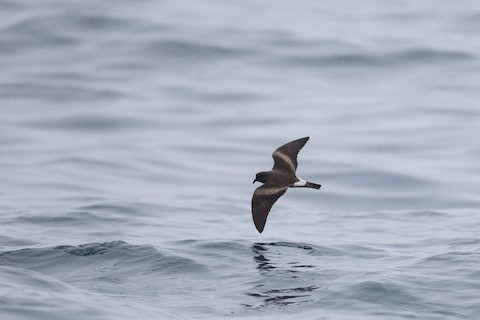Birdfinding.info ⇒ The Japanese endemic form of Band-rumped Storm-Petrel is rare, little-known, and declining. It is sometimes seen on offshore trips from ports in northeastern Honshu and Hokkaido during the breeding season, between May and November, especially offshore from Miyako and Fukushima in mid-summer. Several observations of band-rumped-type storm-petrels from the Solomon Islands south to Lord Howe Island during March and April in the late 2010s and ‘20s seem most likely to refer to this form.
“Japanese Storm-Petrel”
Hydrobates castro kumagai
Breeds in Japan; apparently migrates to the southwestern Pacific.
Breeds on islets along the northeast coast of Honshu, where it is known mainly from Hide-jima in Iwate Prefecture. That colony declined precipitously from 25,000 pairs in the mid-1960s to 36 pairs in 2010. Presumably nests on additional islets along the Iwate coast, as is suspected on Funakoshi-oshima and Sangan-jima.
Present in Japanese waters from May to November. Its whereabouts during the rest of the year are unknown, but there are a handful of records that suggest migration to the Coral and Tasman Seas during the boreal winter.
Identification
As a form or potentially cryptic species within the Band-rumped Storm-Petrel complex, “Japanese” is visually indistinguishable from other Pacific band-rumped-type storm-petrels—and it may be best merged with “Hawaiian”, as the two seem to be effectively identical.
Identification is based solely on geographical probability—i.e., any band-rumped-type storm-petrel observed in the western North Pacific is presumed to be “Japanese”. (Recent records from the southwestern Pacific, in waters of the Solomon Islands, New Caledonia, Queensland, New South Wales, and Lord Howe Island, during March and April might refer to either “Japanese” or “Hawaiian” or some of both.)
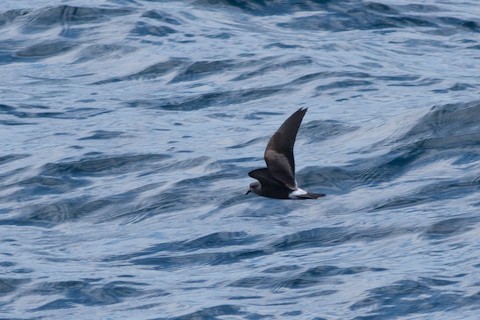
“Japanese Storm-Petrel”, H. c. kumagai. (Offshore from Kushiro, Hokkaido, Japan; October 13, 2010.) © Kouta Kurasawa
Like other band-rumped-type storm-petrels, “Japanese” is dark-brown overall, with an even white band across the rump that usually extends partway down the sides of the rump to the undertail. Its tail usually appears either square-tipped or shallowly notched.
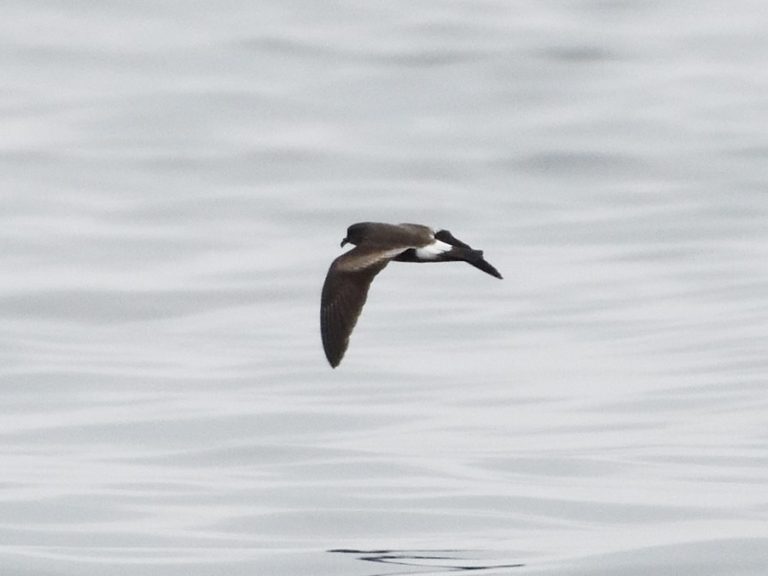
“Japanese Storm-Petrel”, H. c. kumagai. (Offshore from Miyako, Iwate, Honshu, Japan; July 14, 2018.) © Hiroyuki & Shoko Tanoi
As with most dark storm-petrels, all band-rumped-types typically show a paler brown or whitish diagonal stripe on the wing coverts, but the boldness varies depending on molt-stage and lighting. So the apparent color and boldness of the wingbar can provide clues to the age and molt-stage of closely observed individuals.
Juveniles and freshly molted adults have the most pronounced wingbars. On juveniles the bar appears silvery. On fresh adults, the bar is blond. With feather-wear, the bar diminishes and may disappear entirely by the time the next molt begins.
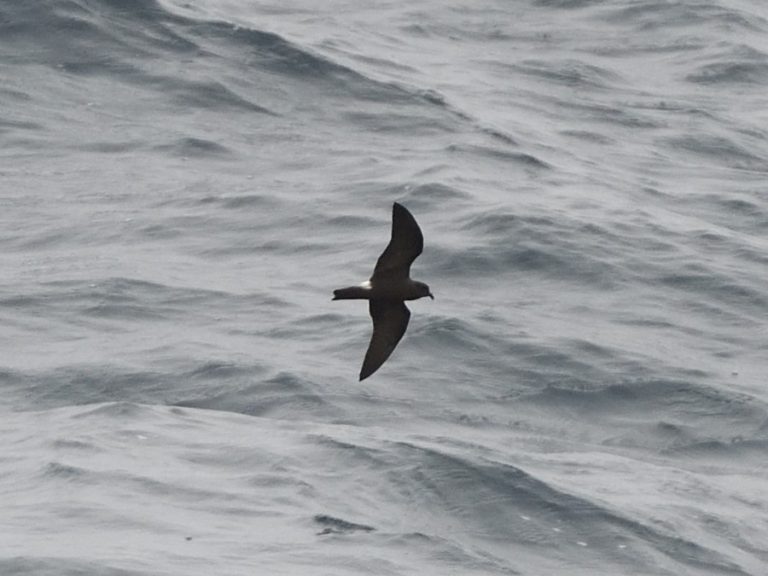
“Japanese Storm-Petrel”, H. c. kumagai. (Offshore from Rokkasho, Aomori, Honshu, Japan; August 23, 2019.) © Hiroyuki & Shoko Tanoi
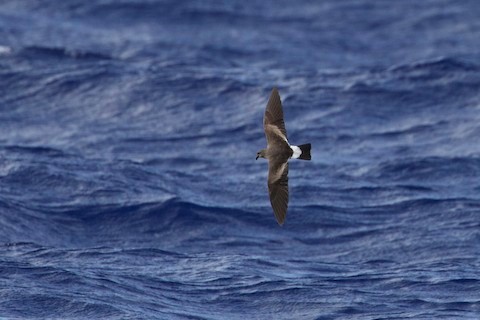
“Japanese Storm-Petrel”, H. c. kumagai, seems to be the most likely identification of band-rumped-type storm-petrels in the Coral Sea during March and April. (Offshore from Southport, Queensland, Australia; March 14, 2021.) © Elliot Leach
Voice. There appear to be no publicly available recordings. In general, band-rumped-type storm-petrels give two main call-types at breeding colonies, chattering and purring, but they differ in their patterns.
Studies of the vocalizations of North Atlantic band-rumpeds have been instrumental to understanding the relationships among similar-looking forms. Such studies in the Pacific will likely be needed to understand the taxonomic status of each breeding population.
Notes
Monotypic form, one of seven or more potentially distinct forms of Band-rumped Storm-Petrel (castro), which is in the midst of taxonomic revisions. Eventually, it seems likely that the Pacific forms will be classified as one or more species separate from the Atlantic forms.
Howell and Zufelt (2019) provisionally classify of each Pacific breeding population as a separate species: “Japanese” (kamagai), “Hawaiian” (cryptoleucurus), “Darwin’s” (bangsi), and “Spear’s” (sp. nova). The latter two forms refer to seasonally distinct breeding populations of the Galápagos, which are not known to be distinguishable except based on their egg-laying calendars.
A study published in 2019 (Taylor et al.) concluded that all of the Pacific forms were closely related to one another, but also to one of the South Atlantic forms (helena). The close affiliation of the Pacific populations is not surprising, but their apparent affiliation with one Atlantic population presents an unanticipated complication.
Additional Photos of “Japanese Storm-Petrel”
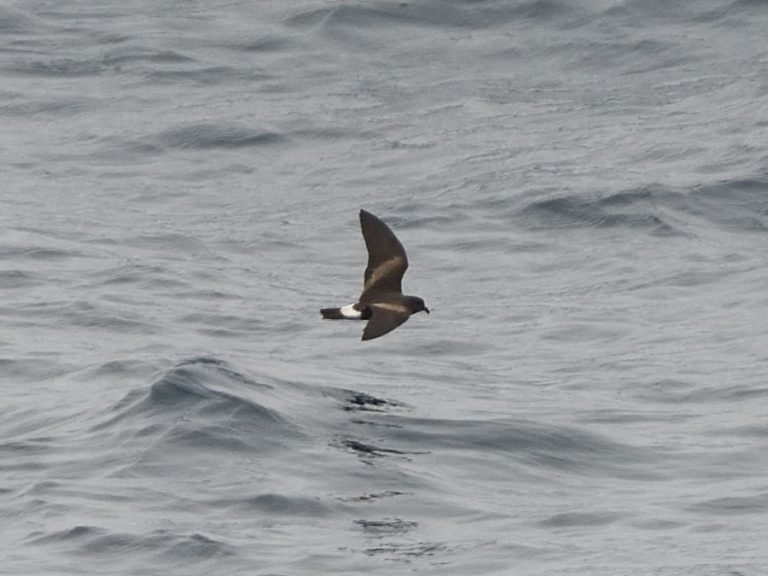
“Japanese Storm-Petrel”, H. c. kumagai. (Offshore from Rokkasho, Aomori, Honshu, Japan; August 23, 2019.) © Hiroyuki & Shoko Tanoi
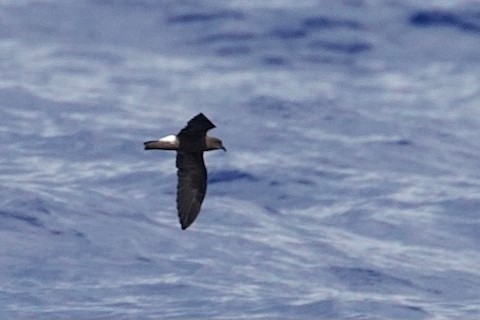
“Japanese Storm-Petrel”, H. c. kumagai, seems to be the most likely identification of band-rumped-type storm-petrels in the Coral Sea during March and April. (Offshore from Southport, Queensland, Australia; March 13, 2021.) © Elliot Leach

“Japanese Storm-Petrel”, H. c. kumagai, seems to be the most likely identification of band-rumped-type storm-petrels in the Coral Sea during March and April. (Offshore from Southport, Queensland, Australia; March 13, 2021.) © Elliot Leach
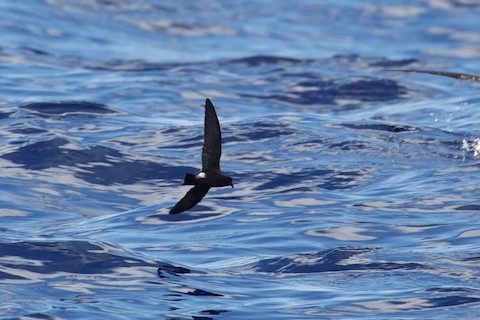
“Japanese Storm-Petrel”, H. c. kumagai, seems to be the most likely identification of band-rumped-type storm-petrels in the Coral Sea during March and April. (Offshore from Southport, Queensland, Australia; March 14, 2021.) © Elliot Leach
References
BirdLife International. 2018. Hydrobates castro. The IUCN Red List of Threatened Species 2018: e.T132341128A132433305. https://dx.doi.org/10.2305/IUCN.UK.2018-2.RLTS.T132341128A132433305.en. (Accessed December 17, 2021.)
eBird. 2021. eBird: An online database of bird distribution and abundance. Cornell Lab of Ornithology, Ithaca, N.Y. http://www.ebird.org. (Accessed December 17, 2021.)
Harrison, P. 1983. Seabirds: An Identification Guide. Houghton Mifflin, Boston.
Howell, S.N.G. 2012. Petrels, Albatrosses & Storm-Petrels of North America. Princeton University Press.
Howell, S.N.G., and K. Zufelt. 2019. Oceanic Birds of the World. Princeton University Press.
Onley, D., and P. Scofield. 2007. Albatrosses, Petrels & Shearwaters of the World. Princeton University Press.
Seabirding of Japan. 2021. Japanese Band-rumped Storm-Petrel. http://seabirding-japan.com/japanese-band-rumped-storm-petrel/. (Accessed December 17, 2021.)
Xeno-Canto. 2021. Band-rumped Storm Petrel – Oceanodroma castro. https://xeno-canto.org/species/Oceanodroma-castro. (Accessed December 17, 2021.)
